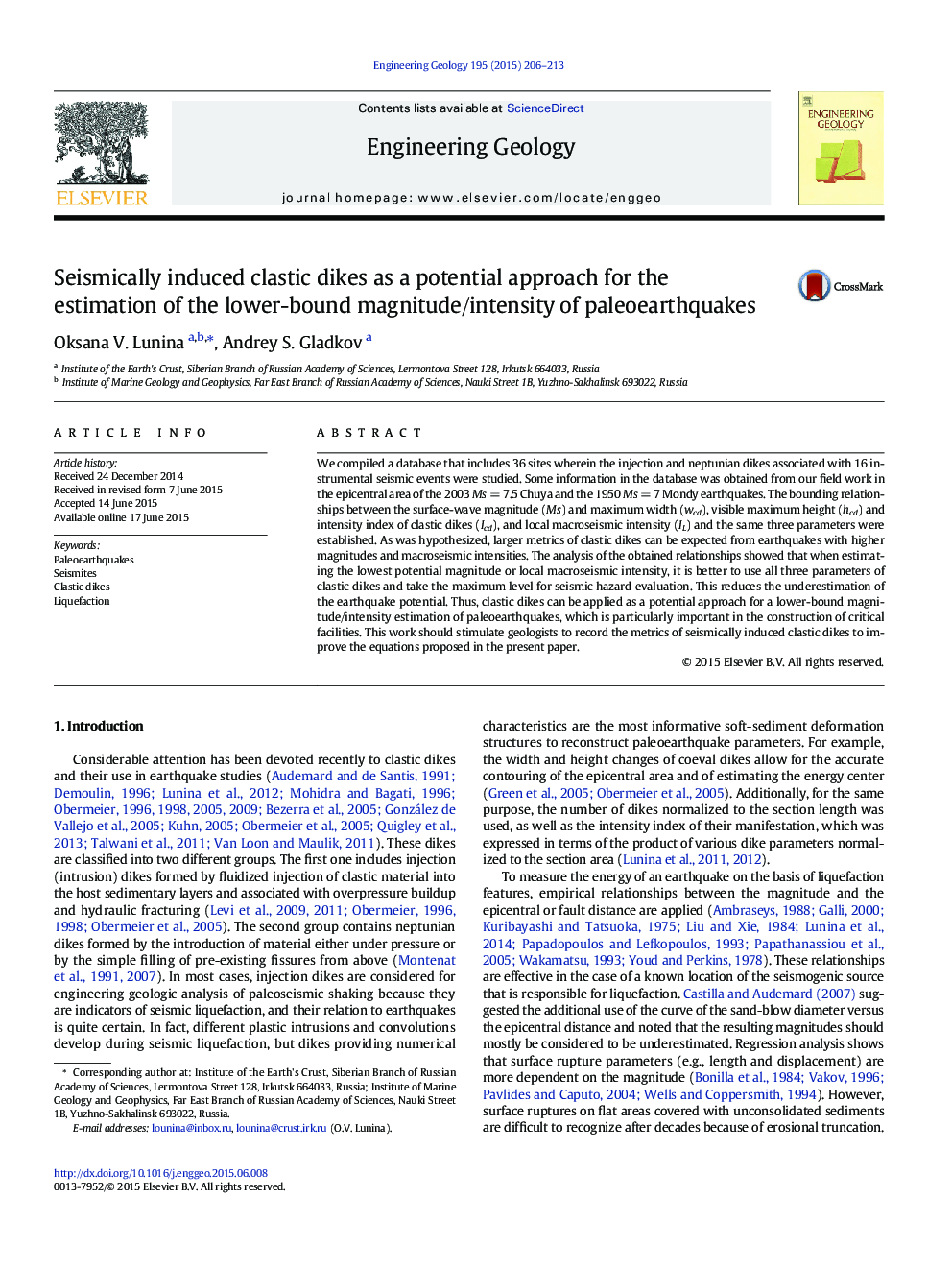| Article ID | Journal | Published Year | Pages | File Type |
|---|---|---|---|---|
| 4743296 | Engineering Geology | 2015 | 8 Pages |
•A database of clastic dikes induced by instrumental earthquakes has been compiled.•Relationships between the earthquake and dike parameters have been established.•The maximum metrics of clastic dikes depend on the earthquake magnitude and intensity.•Dikes can be applied for estimating the magnitude/intensity of paleoearthquakes.
We compiled a database that includes 36 sites wherein the injection and neptunian dikes associated with 16 instrumental seismic events were studied. Some information in the database was obtained from our field work in the epicentral area of the 2003 Ms = 7.5 Chuya and the 1950 Ms = 7 Mondy earthquakes. The bounding relationships between the surface-wave magnitude (Ms) and maximum width (wcd), visible maximum height (hcd) and intensity index of clastic dikes (Icd), and local macroseismic intensity (IL) and the same three parameters were established. As was hypothesized, larger metrics of clastic dikes can be expected from earthquakes with higher magnitudes and macroseismic intensities. The analysis of the obtained relationships showed that when estimating the lowest potential magnitude or local macroseismic intensity, it is better to use all three parameters of clastic dikes and take the maximum level for seismic hazard evaluation. This reduces the underestimation of the earthquake potential. Thus, clastic dikes can be applied as a potential approach for a lower-bound magnitude/intensity estimation of paleoearthquakes, which is particularly important in the construction of critical facilities. This work should stimulate geologists to record the metrics of seismically induced clastic dikes to improve the equations proposed in the present paper.
Graphical abstractFigure optionsDownload full-size imageDownload as PowerPoint slide
